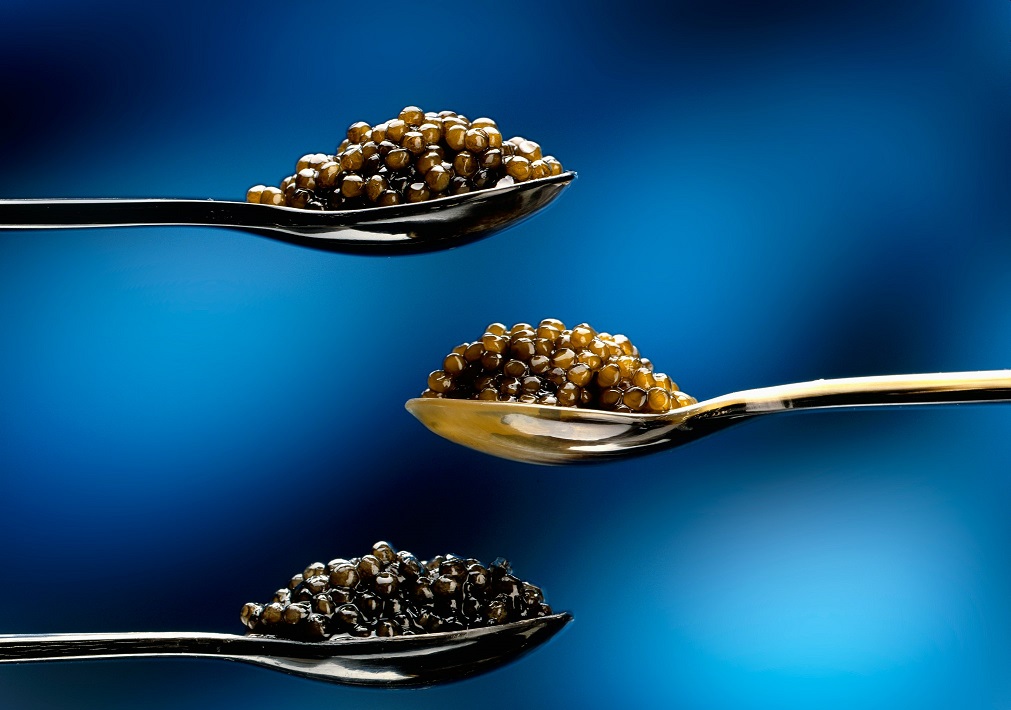What types of black caviar are there?

Black caviar is an exquisite delicacy, a symbol of luxury, a sign of excellent taste and special status. However, behind the world-famous name of this expensive product lies a whole universe of differences: from the fish itself to the color and size of the eggs, from the salting method to the nuances of presentation. What kinds of black caviar are there, and what should anyone who wants to comprehend the richness of its flavor and incorporate this delicacy into their holiday or even everyday menus know?
Each fish has its own eggs
Black caviar is obtained from sturgeon, and therefore, the first thing to inquire about is the product's origin.
- The most expensive and comparatively rare beluga caviar can be called the queen of delicacies. It has the largest grains, an extremely delicate shell, and a unique creamy, nutty flavor with a lingering aftertaste. A professional can immediately recognize this caviar by its light gray, sometimes even silvery, color.
- Kaluga caviar is also large, with grains up to 3 mm in size, and black or brown eggs. It is rare and very expensive.
- A gourmet classic is sturgeon caviar, with medium-sized grains and a rich flavor. The color is most often dark gray, almost black, bronze, or sometimes brown.
- Stellate sturgeon caviar is smaller, but its flavor is very vibrant and even piquant. It is even darker than sturgeon caviar. It is chosen by those who prefer a more pronounced aftertaste.
- Spike and sterlet caviar have very small black eggs and a delicate, subtle flavor, less distinctive than that of their relatives.
If you pay even closer attention to the color and size of the eggs, you'll notice that light-gray beluga or sturgeon caviar is considered especially valuable. Larger grains are more prized, as they have a more refined flavor and a more pleasant "explosion" in the mouth.
If you desire a delicate, subtle flavor, you can look for caviar with silvery hues, while the luxurious classics have a dark gray, almost black color and medium size.
Sorting, processing technology, and cultivation features
After harvesting, the caviar is usually sorted by color, size, and grain density. Internationally, there are several categories of this product.
- Premium Premium: the largest, lightest eggs, with virtually no fishy odor, and an ideal texture.
- First Grade: high-quality caviar, but not as perfect in color, size, and texture. Most reputable restaurants offer this type.
- Second Grade: fine-grained caviar, with minor imperfections and a more pronounced flavor. Mixing caviar from different fish is acceptable. A small amount of liquid may remain at the bottom of the jar.
Caviar processing and preparation methods also play a role. The most valuable and delicious is lightly salted, granular caviar. However, for example, lovers of stellate sturgeon delicacy often prefer pressed processing. In this case, the eggs are first salted in their shells, then dried, cleaned, and pressed.
Roe-cured caviar is also available commercially. When prepared this way, the grains are salted along with the shells, resulting in firmer eggs, although they may have an irregular shape. The product has a distinct fishy flavor.
A special variety is trinity caviar. After removing the shells, the grains are then covered with warm, salted water. Excess liquid drains through a special sieve, after which the finished product is packaged.
What a gourmet should pay attention to
Due to bans on wild sturgeon fishing, the market today predominantly offers farmed black caviar. The fish are raised in the most comfortable conditions possible, receiving a balanced diet and care. They are selected by age, and the caviar is harvested using humane methods. This allows us to produce consistent quality and different types of caviar without harming the environment.
The production location, processing method, and availability of the necessary certificates are all important factors to consider. Real caviar has a delicate aroma, slightly firm grains, and a harmonious flavor.
To fully appreciate this flavor, no special additives are needed. A mother-of-pearl spoon and perhaps a glass of champagne are enough to further enhance the solemnity of the moment.
Уважаемый клиент!
В связи с новогодними праздниками с 30.12.2019 года по 08.01.2020 года включительно, заказы не принимаются.
При заказе товара сегодня, его оформление будет осуществлено 09.01.2020 года!
Всех поздравляем с Новым Годом 2020 и Рождеством Христовым! Желаем Вам осуществления всех заветных желаний, достатка, любви и благополучия !!!!!
Друзья всех поздравляем с праздниками, желаем мира, здоровья и довольства!
Заказы принимаем до 17 часов 30.12 с отправкой сегодня.
Остальные заказы будут отправлены с 03.01.23 максимально быстро.
All orders received after 5:00 PM on December 30, 2024 will be processed and shipped on January 3, 2025.
All orders received before 17:00 30.12.2020
All orders received after the specified period will be processed before 01/05/2022
You are being redirected
to the payment page








